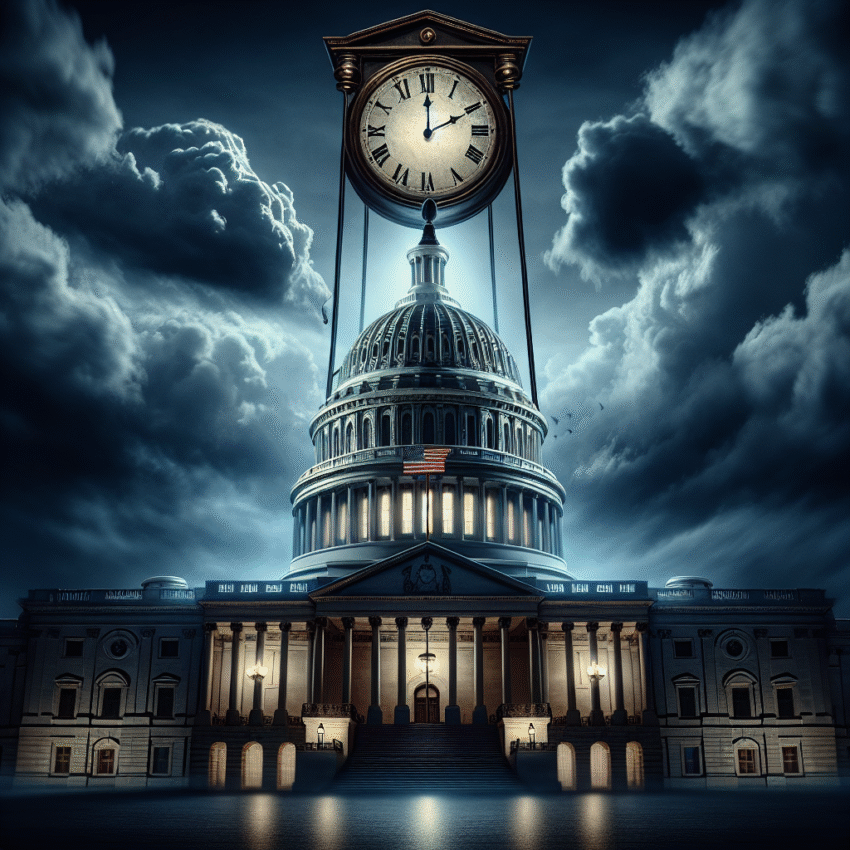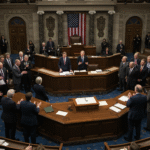A looming government shutdown in the United States arises from deep-rooted political divisions, fiscal pressures, and procedural hurdles that have been magnified as the budget deadline approaches. The clashing interests of various political factions illustrate a classic struggle that underscores the complexities of governance in a divided Congress. Here’s an in-depth analysis of the primary factors contributing to the impending shutdown.
### Understanding the Budget Process
The U.S. government operates on an annual budget cycle, requiring Congress to pass appropriations bills to fund federal agencies and programs. The fiscal year runs from October 1 to September 30, and as the deadline approaches, lawmakers must reconcile competing priorities within their respective parties. Failure to agree on a budget leads to a government shutdown, where non-essential functions cease, disrupting services and impacting millions.
### Political Polarization
In recent years, political polarization has intensified, complicating the budget negotiation process. With a split Congress—Democrats controlling the Senate and Republicans holding the House—both parties have starkly different priorities. Republicans are pushing for significant cuts to domestic programs while demanding increased defense spending, whereas Democrats advocate for funding social programs and addressing climate change initiatives.
This stalemate creates a perfect storm where both sides refuse to yield, leading to protracted negotiations. Key issues include the debt ceiling, funding for social programs, healthcare, and education. The disparity between party agendas often means that budget agreements take a backseat to political posturing, fueling the likelihood of a shutdown.
### Legislative Stalemate
As Congress has returned from recess, the urgency of passing legislation before the budget deadline has grown. However, bipartisan cooperation has been scarce. The House of Representatives has seen infighting among Republicans, especially between moderates and far-right factions. Some far-right members have threatened to oppose any spending not meeting their criteria, which could lead to the failure of budget proposals and, ultimately, a shutdown.
Moreover, Democrats have maintained a more unified front, but even within their ranks, there are disagreements regarding the extent of funding for various programs. The ideological battle over fiscal responsibility versus social spending highlights the challenges of passing a comprehensive budget.
### Fiscal Responsibility vs. Program Funding
One of the critical discussions fuelling the potential shutdown is the balance between fiscal responsibility and public spending. Conservative lawmakers are advocating for spending cuts, attempting to rein in the federal deficit while presenting their stance as a matter of economic prudence. However, many Democrats argue that cutting vital services would disproportionately affect the most vulnerable populations, thereby risking public welfare.
Proposals to cut social safety net programs such as Medicaid, SNAP (Supplemental Nutrition Assistance Program), and funding for education have sparked fierce debates. The difficulty lies in reconciling a budget that reflects fiscal conservatism without compromising essential services, an endeavor that seems increasingly unmanageable as the deadline nears.
### External Pressures
In addition to internal party dynamics, external pressures play a significant role in the budget process. Economic conditions, rising inflation, and global uncertainties influence budgetary choices. Recent inflationary trends have resulted in increased costs of living, prompting calls for more robust social assistance programs, which complicate negotiations further.
Additionally, the international landscape, including conflicts abroad and supply chain issues, have implications for defense spending. With global anxieties running high, Congress faces pressure to ensure that national security remains funded, which conflicts with domestic spending priorities.
### Past Precedents and Historical Context
Historically, government shutdowns have spurred political maneuvering and posturing rather than productive negotiation. The most notable cases in recent history, such as the 2013 and 2018-2019 shutdowns, illustrate that extending negotiations often leads to stalemates and a lack of resolution. Each group tries to leverage its position to advance a particular agenda, contributing to a toxic atmosphere that fosters dysfunction.
Public perception can also play a pivotal role during shutdown threats. The sides generally blame each other, fueled by media coverage highlighting the impact on federal workers and public services. The atmosphere of finger-pointing and blame attribution only enhances partisan divides, making a compromise more difficult.
### The Role of Leadership
The effectiveness of leadership in Congress is paramount during budget negotiations. Key figures such as the Speaker of the House and the Senate Majority Leader have significant influence over the direction of discussions. If they cannot galvanize their respective chambers and drive negotiations, the potential for a shutdown increases dramatically.
In the current climate, new leadership dynamics may further complicate negotiations. With several members of Congress recently elected under promises to adhere firmly to their party platforms, there is a marked reluctance to consider bipartisan solutions. If leaders are unable to broker a deal, a government shutdown becomes almost inevitable.
### Impact on Federal Workers and Services
A government shutdown directly affects federal employees, contractors, and services. During a shutdown, numerous federal employees are furloughed or work without pay, leading to financial distress for many families. Essential services may continue, but non-essential operations halt, affecting everything from national parks to federal loans and applications. The disruption contributes to broader economic consequences, undermining public confidence and stability.
### Conclusion
The potential government shutdown reflects the intersection of political, economic, and administrative challenges in a highly polarized environment. As the deadline approaches, continued negotiations are critical, yet the prevailing divisions suggest that a resolution may remain elusive. The stakes are high, and the implications of inaction extend far beyond the halls of Congress, affecting everyday Americans and the economy at large. Without committed bipartisan effort, the country stands at the edge of a significant disruption.




